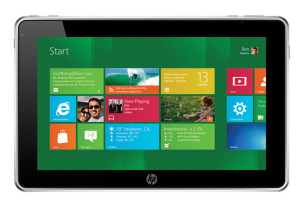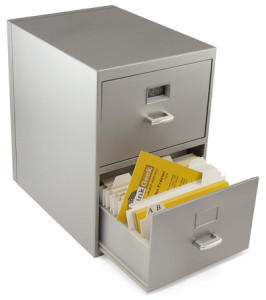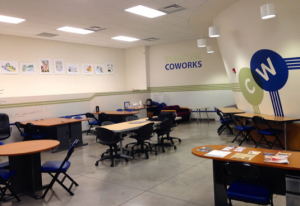It wasn’t so long ago that 100% of mail was delivered by the post office, “meetings” meant always getting up and going somewhere to talk face-to-face with somebody, “records” were all made out of dead trees and kept in manila folders, and the only “electric” thing on you – minus the watch – was the static in between your overly-tight wool dress pants or silk slip – you choose.
Not anymore.
Over the past decade or two, technology has vastly reshaped the workplace, mostly for the better and sometimes for the worse. Here’s a quick look at some of the influences science has had on “the office.”
Ways Work Has Changed
1) Email
 Ask the average American for a stamp, and they will most likely give you funny, flustered looks. Almost everyone, and probably even your grandfather has an email address at “Gmail,” “Hotmail,” “I’m-never-going-to-read-this-much-less-respond-to-it-mail,” or some such “@mail.com.” It’s about as human as having a birth certificate and perhaps more common.
Ask the average American for a stamp, and they will most likely give you funny, flustered looks. Almost everyone, and probably even your grandfather has an email address at “Gmail,” “Hotmail,” “I’m-never-going-to-read-this-much-less-respond-to-it-mail,” or some such “@mail.com.” It’s about as human as having a birth certificate and perhaps more common.
Moreover, mass email services such as Mail Chimp and iContact offer marketers or the average business person the capacity to email thousands of people with literally one click. The average corporate professional receives about 80 emails a day, approximately 16% of which are spam, which seems like a low-ball number. “Sign up now for this limited time only offer exclusively chosen for you – all rights reserved, subject to penalties and fees, available only at participating locations for qualified users.” Reminds one of the classic George Carlin marketing rant, endeared by millions.
The upside? Email is fast, easy, and efficient. The downside: when was the last time you got a handwritten, personally addressed envelope someone licked shut containing precious words written only for you? Exactly. You can’t replace that and the savvy businessperson should still employ that assiduously. Think of Frank Underwood in the epic conclusion to “House of Cards” Season 2, for the Netflix fans. Stopping there to avoid spoilers.
2) Meeting Software
 Tools such as GoTo Meeting and WebEx have made the business world that much smaller and cut costs by making long distance work discussions doable from the comfort of your own office. No more twelve-hour long flights unless you have to, no more walking you through that complex web thing over the phone in one hand. Conference software also allows you to “share your screen” with the viewers, allowing company-wide training and the like as well.
Tools such as GoTo Meeting and WebEx have made the business world that much smaller and cut costs by making long distance work discussions doable from the comfort of your own office. No more twelve-hour long flights unless you have to, no more walking you through that complex web thing over the phone in one hand. Conference software also allows you to “share your screen” with the viewers, allowing company-wide training and the like as well.
Pros? Already mentioned. Cons? Walking into someone’s office for a presentation dressed to the nines never loses its grandeur. However, now it’s more for the grander things “on the line.”
3) Shared Work Spaces
By this we don’t mean “Santa Claus-ing” the person next to you (this could be good, this could be really, really bad – either way it will get you fired). Software such as Google’s “Docs” helps you share files easily with others and allow them to edit or just view. More complex online “spaces” such as Podio and SalesForce/Dreamforce offer a work community similar to a social network where work documents can be shared along with updates, schedules, meeting notes, and everyone’s contact information. It’s a great way to keep everyone updated without the tacky overly cluttered “never read that anyway” bulletin board, and also get things done in team without having to meet together five times a day nor email everyone all the time.
Just don’t forget it’s still good to see your team members from time to time too.
4) Social Media and Business
This could be an article unto itself. Ever since Facebook, Twitter and the like hit the cyber-sphere, businesses have jumped upon them (what an image). Now business to business advertising is huge on these means (get people where they are, as the marketing adage goes). LinkedIn, for instance, allows one to target based not only on company, company size, business type, location, and all that – but you can show ads and articles to only executives of a certain level, for a fee of course.
Advertising by means of paid ads or just a strong, fun social presence is present as never before on the virtual world no one knew twenty years ago. Customer service call centers can now be at least partially replaced by “tweeting” to and fro. Google chat and like services have made it possible for employees internally to speak instantly with each other and share information.
For every barrier broken by social media there must always be a step ladder over the new boundaries: talking to people will never lose its luster in some instances, especially when you are asked to “press 2 now if you no longer desire to be asked if you want to press 5 for Spanish.” One moment please.
5) Work From Home
Though working from a laptop in a coffee shop [cough] or from a home desktop next to your iPhone may seem like bread and butter in the modern biz world, this was unheard of not-so-long ago. And, instead of lugging around a briefcase full of papers just waiting to randomly slam to the pavement, break open, and fly into oblivion, man has invented cloud storage services such as Google Drive and Dropbox to save all your files, back them up, and share them with any computer or device you desire. So when you accidentally drop C-4 on your Macbook: never fear – you can get that stuff back. Okay, maybe not the computer but you get the idea.
6) Freelancing
 Along these same lines, freelancers are now everywhere and anywhere (and I mean anywhere) and are offering every service imaginable (okay, get your head out of the gutter) and competing for prices. It only takes a computer, the web, and some intelligence to tap into the world of “guns for hire” these days. The same rules apply: people can work from every “doghouse, penthouse, madhouse, outhouse, farmhouse, and warehouse” (Tommy Lee Jones, “The Fugitive” [ad lib]) and make money. This also makes getting workers a lot easier for employers too (especially small business guys).
Along these same lines, freelancers are now everywhere and anywhere (and I mean anywhere) and are offering every service imaginable (okay, get your head out of the gutter) and competing for prices. It only takes a computer, the web, and some intelligence to tap into the world of “guns for hire” these days. The same rules apply: people can work from every “doghouse, penthouse, madhouse, outhouse, farmhouse, and warehouse” (Tommy Lee Jones, “The Fugitive” [ad lib]) and make money. This also makes getting workers a lot easier for employers too (especially small business guys).
The downside: quality doesn’t replace quantity (cheap and easy labor).
7) That work radio!
 Everyone remembers a job where the music just was too (insert whatever genre you hate: country, heavy metal, lite romantic “favorites”). Thanks to everyone having a computer in their workstation and handy dandy web services such as Pandora, Spotify, Vevo, iTunes, and YouTube, you can listen to whatever you want, whenever you want including books on “tape,” George Carlin, the soundtrack to “The Fugitive,” the Bee Gees, Tina Turner, or other exhilarating stuff like that.
Everyone remembers a job where the music just was too (insert whatever genre you hate: country, heavy metal, lite romantic “favorites”). Thanks to everyone having a computer in their workstation and handy dandy web services such as Pandora, Spotify, Vevo, iTunes, and YouTube, you can listen to whatever you want, whenever you want including books on “tape,” George Carlin, the soundtrack to “The Fugitive,” the Bee Gees, Tina Turner, or other exhilarating stuff like that.
8) The smartphone

Lots to say here, but more than anything the smartphone – for better or worse – has allowed us to take work anywhere we go: emails, of course – calls, even documents, chat, and stats: the world is caught up in anticipation of what’s coming up next. Hint: Google Glass.
9) The rolodex
 Most kids don’t even know what that is. Thanks to computerized data systems, databases can be stored, shared, accessed, and updated from everywhere and anywhere. No more flipping for that or losing the number, because it’s the only one you want. Steely Dan anyone?
Most kids don’t even know what that is. Thanks to computerized data systems, databases can be stored, shared, accessed, and updated from everywhere and anywhere. No more flipping for that or losing the number, because it’s the only one you want. Steely Dan anyone?
10) Calendar
Remember that thing you buy around Christmas time with cliché nature pictures or Star Wars guys with really bad graphically designed backgrounds? Chances are there are some hanging somewhere near you but if a your boss asks you to be in a meeting at 10, you’ve probably already flipped out your smartphone, outlook, or Google calendar and synced it to all three. Many companies use internal networks such as Google to share calendars and meeting room availability. It makes checking people’s availability a moot point and scheduling a breeze.
But you still buy that cat calendar for Christmas – because it’s cute and better than looking at the wall all day.
11) Notes
 Similar concept. Note taking and even voice recording is “I have an app for that.” It usually comes standard and you can email it or make a to do list out of it right away.
Similar concept. Note taking and even voice recording is “I have an app for that.” It usually comes standard and you can email it or make a to do list out of it right away.
12) Tablets
 Whether it’s a meeting, break, or just another resource at the desk or on the go, tablets give you more visibility to get stuff done. Their unique handy apps can serve to show off products, prompt actors during a shoot, or shoot shoplifters (okay, you can’t do that – yet).
Whether it’s a meeting, break, or just another resource at the desk or on the go, tablets give you more visibility to get stuff done. Their unique handy apps can serve to show off products, prompt actors during a shoot, or shoot shoplifters (okay, you can’t do that – yet).
13) Reporting
 Today there’s a program for everything: keeping track of productivity, keeping track of the people that track productivity, producing the programs that track the people that track the programs that track productivity, etc. And business software that is any good always has that “report” button to give you a simple summarized status update that is often customizable.
Today there’s a program for everything: keeping track of productivity, keeping track of the people that track productivity, producing the programs that track the people that track the programs that track productivity, etc. And business software that is any good always has that “report” button to give you a simple summarized status update that is often customizable.
14) Electronic records
 Remember going into the doctor’s office and seeing file cabinets the size of Egyptian tombs? Well, chances are you’re not seeing that so much anymore. The invention of electronic health records (EHR), is streamlining the medical industry and making easier to track, share, and access information to better patient care. And this is not limited to the med field. The elimination of paper is speeding work flow worldwide.
Remember going into the doctor’s office and seeing file cabinets the size of Egyptian tombs? Well, chances are you’re not seeing that so much anymore. The invention of electronic health records (EHR), is streamlining the medical industry and making easier to track, share, and access information to better patient care. And this is not limited to the med field. The elimination of paper is speeding work flow worldwide.
Downside? Where will be in a blackout? Or when the back up’s back up goes down? Cyber warfare is a real thing. Will just leave that out there so you can sleep better at night.
15) Websites!
 Where would we be without the World Wide Web? Back in the 80’s but with less embarrassing clothes and a less dead Patrick Swayze. Nowadays, 97% of people turn to the internet before driving around to look for stuff they need. They are using search engines and clicking on the top three choices to find what they need. That’s why not only having a company website is important to get business today, but making sure you are following all the rules to be “search engine optimized” (SEO) and beat out the competition. SEO is now a billion dollar industry and for good reason: Google is now the world’s boulevard: be there or go out of business.
Where would we be without the World Wide Web? Back in the 80’s but with less embarrassing clothes and a less dead Patrick Swayze. Nowadays, 97% of people turn to the internet before driving around to look for stuff they need. They are using search engines and clicking on the top three choices to find what they need. That’s why not only having a company website is important to get business today, but making sure you are following all the rules to be “search engine optimized” (SEO) and beat out the competition. SEO is now a billion dollar industry and for good reason: Google is now the world’s boulevard: be there or go out of business.
Pretty much.
Let Me Tell You This in Closing
There’s much more to say here but technology will never take the place of two things: person to person contact and timeless business ethics and values.
Social media and modern communication will lead us to connect with real people and get things done, but it won’t take away the need to be and have good people around. Business is based on trust and integrity and technology is its means. Companies that remember that will last forever; the others will get rich and lose us, because somewhere along the line we will see that they don’t care.
I think there’s an app for that.
For more TECH – CLICK HERE
A former Internet Marketing Manager, Joe Cunningham is a screenwriter, playwright and all-around adventurer. He also blogs for Kinani Blue. You can follow him on Twitter at @IndianaJoe77 or he can be reached at [email protected].
[fbcomments url="" width="100%" count="on"]











